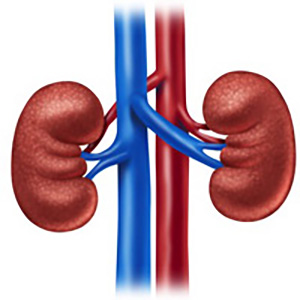Spinal versus general anesthesia in retrograde intrarenal surgery

Accepted: May 20, 2022
All claims expressed in this article are solely those of the authors and do not necessarily represent those of their affiliated organizations, or those of the publisher, the editors and the reviewers. Any product that may be evaluated in this article or claim that may be made by its manufacturer is not guaranteed or endorsed by the publisher.
Aim: The indications for retrograde intrarenal surgery (RIRS) have greatly increased, however, there is still no consensus on the use of spinal anesthesia (SA) during this procedure. The aim of this study was to evaluate the comparability of surgical outcomes of RIRS performed under SA versus general GA for renal stones. Materials and methods: This was a retrospective, observational study in patients scheduled for RIRS in a single teaching hospital in Turkey. Inclusion criteria were age > 18 years and the presence of single or multiple renal stones. We recorded information concerning the site of lithiasis, the number of calculi, total stone burden, and the presence of concomitant ureteral stones or hydronephrosis. Results were evaluated in terms of surgical outcome, intraoperative and postoperative complications. Patients were followed-up until day 90 from discharge. Results: The data of 502 patients, 252 in GA group and 250 in SA group, were evaluated. The stone-free rate was 81% in the GA group and 85% in the SA group (p = 0.12). No cases of conversion from SA to GA were recorded. Complication rates were similar in the 2 groups (19% vs 14.5%, p = 0.15). Conclusions: In our cohort, RIRS performed under SA and GA was equivalent in terms of surgical results and complications.
Doizi S, Traxer O. Flexible ureteroscopy: technique, tips and tricks. Urolithiasis. 2018; 46:47. DOI: https://doi.org/10.1007/s00240-017-1030-x
Giusti G, Proietti S, Villa L, et al. Current standard technique for modern flexible ureteroscopy: tips and tricks. Eur Urol. 2016; 70:188. DOI: https://doi.org/10.1016/j.eururo.2016.03.035
Osther PJS. Risks of flexible ureterorenoscopy: pathophysiology and prevention. Urolithiasis. 2018; 46:59. DOI: https://doi.org/10.1007/s00240-017-1018-6
Reis Santos JM. Ureteroscopy from the recent past to the near future. Urolithiasis. 2018; 46:31. DOI: https://doi.org/10.1007/s00240-017-1016-8
Xu Y, Min Z, Wan SP, et al. Complications of retrograde intrarenal surgery classified by the modified Clavien grading system. Urolithiasis. 2018; 46:197. DOI: https://doi.org/10.1007/s00240-017-0961-6
Cindolo L, Castellan P, Scoffone CM, et al. Mortality and flexible ureteroscopy: analysis of six cases. World J Urol. 2016; 34:305. DOI: https://doi.org/10.1007/s00345-015-1642-0
Kamal M, Sharma P, Singariya G, Jain R. Feasibility and complications of spinal anaesthesia in percutaneous nephrolithotomy: our experience. J Clin Diagn Res. 2017; 11:UC08. DOI: https://doi.org/10.7860/JCDR/2017/26425.10111
Cybulski PA, Joo H, Honey RJ. Ureteroscopy: anesthetic considerations. Urol Clin North Am. 2004; 31:43. DOI: https://doi.org/10.1016/S0094-0143(03)00087-9
Zeng G, Zhao Z, Yang F, et al. Retrograde intrarenal surgery with combined spinal-epidural vs general anesthesia: a prospective randomized controlled trial. J Endourol. 2015; 29:401. DOI: https://doi.org/10.1089/end.2014.0249
Bosio A, Dalmasso E, Alessandria E, et al. Retrograde intra-renal surgery under spinal anesthesia: the first large series. Minerva Urol Nefrol. 2018; 70:333. DOI: https://doi.org/10.23736/S0393-2249.18.02926-0
Wendt-Nordahl G, et al. Do new generation flexible ureterorenoscopes offer a higher treatment success than their predecessors? Urol Res. 2011; 39:185. DOI: https://doi.org/10.1007/s00240-010-0331-0
Geraghty R, Abourmarzouk O, Rai B, et al. Evidence for ureterorenoscopy and laser fragmentation (URSL) for large renal stones in the modern era. Curr Urol Rep. 2015; 16:1-6. DOI: https://doi.org/10.1007/s11934-015-0529-3
Skolarikos A, Neisius A, Petr˘ík A, et al. EAU Guidelines on Urolithiasis. Edn. presented at the EAU Annual Congress Amsterdam 2022.
Breen P, Park KW. General anesthesia versus regional anesthesia. Int Anesthesiol Clin. 2002; 40:61-71. DOI: https://doi.org/10.1097/00004311-200201000-00006
de la Rosette J, Denstedt J, Geavlete P, et al. CROES URS Study Group. The clinical Research Office of the Endourological Society ureteroscopy global study: Indications, complications, and outcomes in 11885 patiens. J Endourol. 2014; 28:131-9. DOI: https://doi.org/10.1089/end.2013.0436
Okan Bas¸, Can Tuygun, Onur Dede, et al. Factors affecting complication rates of retrograde flexible ureterorenoscopy: analysis of 1571 procedures-a single-center experience World J Urol. 2017; 35:819-826. DOI: https://doi.org/10.1007/s00345-016-1930-3
Maugeri O, Dalmasso E, Peretti D, et al. Stone free rate and clinical complications in patients submitted to retrograde intrarenal surgery (RIRS): Our experience in 571 consecutive cases.Arch Ital Urol Androl. 2021; 93:313-317. DOI: https://doi.org/10.4081/aiua.2021.3.313
Zisman A, Siegel YI, Siegmann A, Lindner A. Spontaneous ureteral stent fragmentation. J Urol. 1995; 153:718-21. DOI: https://doi.org/10.1016/S0022-5347(01)67697-3
Resorlu B, Unsal A, Gulec H, et al. A new scoring system for predicting stonefree rate after retrograde intrarenal surgery: the "resorlu-unsal stone score". Urology. 2012; 80:512-518. DOI: https://doi.org/10.1016/j.urology.2012.02.072
PAGEPress has chosen to apply the Creative Commons Attribution NonCommercial 4.0 International License (CC BY-NC 4.0) to all manuscripts to be published.


 https://doi.org/10.4081/aiua.2022.2.195
https://doi.org/10.4081/aiua.2022.2.195



